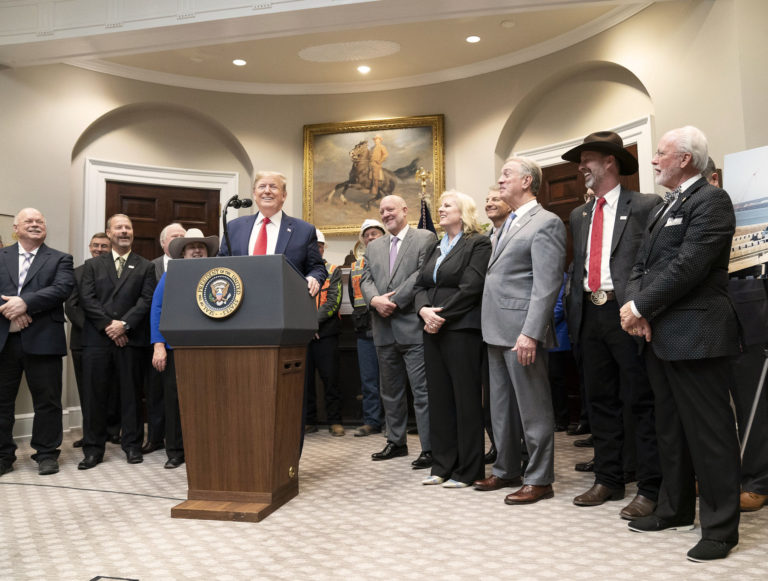In January 2020, the Trump administration proposed dramatic regulatory changes that, if instituted, will undermine one of the nation’s most effective environmental laws, the National Environmental Policy Act (NEPA). The Act, celebrating its 50th anniversary this year, is a cornerstone of the laws and regulations put into place in the 1970s to protect the environment and public health. The law, which has been one of the most effective federal environmental laws, established the CEQ to oversee NEPA implementation and advise the President.
Now, the Trump CEQ has proposed sweeping rule changes, the majority of which stand at cross-purposes with the original intent of NEPA. We urge rejection of the proposals that: (a) minimize the substantive elements of NEPA; (b) arbitrarily limit the scope and length of EIS review; (c) reduce public participation in the NEPA process; (d) expand categorical exclusions; (e) limit the consideration of indirect and cumulative effects, and (f) restrict judicial review. We do support proposed changes that make information about the NEPA process more available in electronic formats and that expand tribal involvement in environmental decision-making.
Why a Strong NEPA Is Needed
When the Republican President Nixon signed NEPA into law on January 1, 1970, he hailed it as a model of bipartisanship. It passed unanimously in the Senate and with only fifteen nay votes in the House. The goal of the Act is “to create and maintain conditions under which man and nature can exist in productive harmony, and fulfill the social, economic, and other requirements of present and future generations of Americans.”[1] In his 1970 State of the Union address, Nixon noted that protecting the environment “is a cause beyond party and beyond factions. It has become a common cause of all the people of this country. It is a cause of particular concern to young Americans, because they more than we will reap the grim consequences of our failure to act on programs which are needed now if we are to prevent disaster later.”[2]

A main purpose of NEPA is to ensure that potentially destructive impacts on both communities and ecosystems would figure into decision-making about federal projects and funding. A strong NEPA is needed to reaffirm and protect basic principles, which throughout NEPA’s history have allowed other agencies and the public to identify potentially superior alternatives and mitigation measures to actions proposed by narrow, siloed mission-driven agencies. The core of NEPA is (1) its mandate that all federal agencies, whatever their specific mission, strive to achieve a harmonious balance between human activities and natural processes; (2) its requirement to document the anticipated environmental impacts of all major federal actions (not just, as previously, simply the economic benefits and costs); (3) often forgotten but no less important, its requirement that agencies document alternatives to the proposed action that might minimize adverse environmental impacts (an entirely new requirement for many federal projects and other actions); and (4) its requirement that this documentation be shared in advance with all other relevant agencies and with the public.
At the time of NEPA’s signing, few anticipated how consequential it would be. Nor did they note the far-reaching significance of its most important provision: Section 102, added late, by Sen. Henry “Scoop” Jackson, to give the law some “teeth.” This section requires the government to produce an environmental impact statement (EIS), assessing the environmental consequences of a proposed action and potential alternatives to proposed federal actions. While the aspirational principles at the beginning of the statute could be implemented flexibly, the EIS requirement could not.[3] As well as providing information, the mandate for an EIS process made NEPA the vehicle for a greater democratization of federal decisions, by opening a new avenue through which voices of the public and of other federal and state agencies affected by the action in question could be heard. Draft EISs are submitted for public comment and agencies are required to respond to public and expert criticism. Thereby, NEPA has been widely recognized by historians and other scholars as having significantly enhanced the democracy of environmental governance.[4]
For a detailed critique of the proposed rule changes, see the attached document, Public Comments on the Proposed Changes to the National Environmental Policy Act.
[1] 42 U.S.C. 4331.
[2] Legislative History, National Environmental Policy Act, balltopedia.org; Richard M. Nixon, “State of the Union Address,” January 22, 1970, UVA Miller Center, Presidential Speeches, https://millercenter.org/the-presidency/presidential-speeches/january-22-1970-state-union-address.
[3] The key case, from 1971, is Calvert Cliffs Coordinating Committee, Inc. et al. v. U.S. Atomic Energy Commission (449 F.2d 1109 (D.C. Cir. 1971)), https://law.justia.com/cases/federal/appellate-courts/F2/449/1109/240994/.
[4] For just one example, see Wendy Nelson Espeland, “Bureaucratizing Democracy, Democratizing Bureaucracy,” Law and Social Inquiry 25, no. 4 (Autumn, 2000): 1077-1109.

